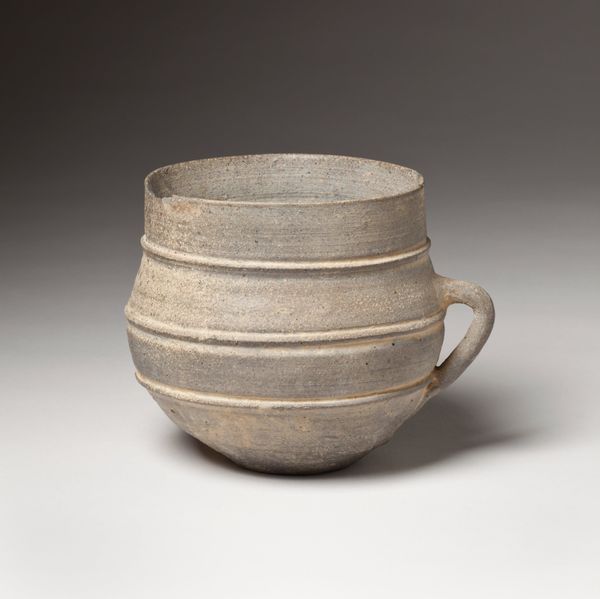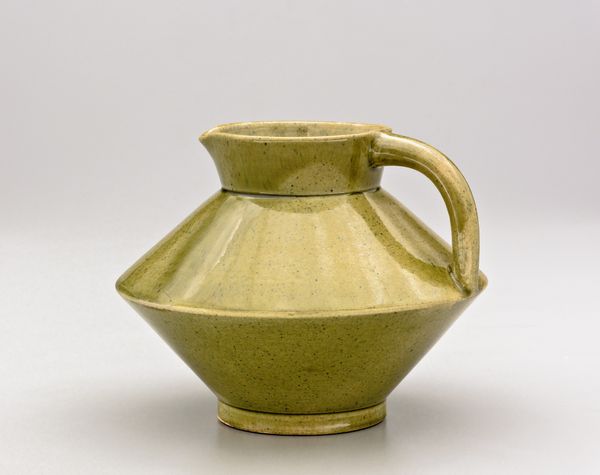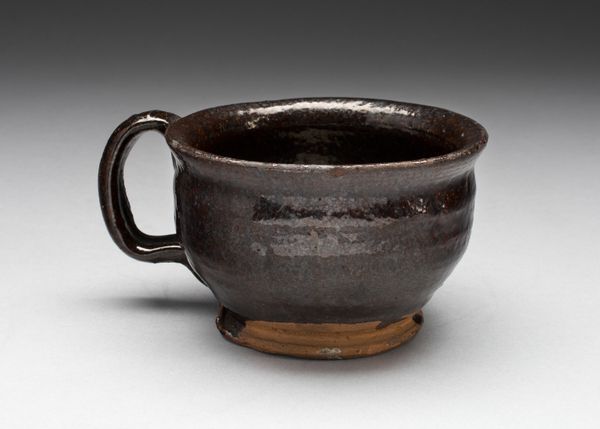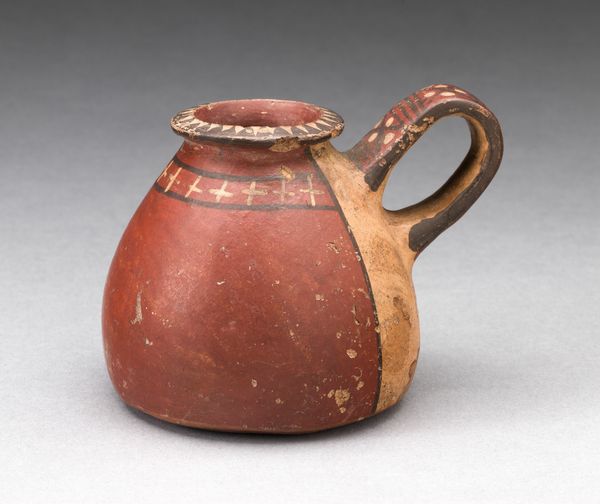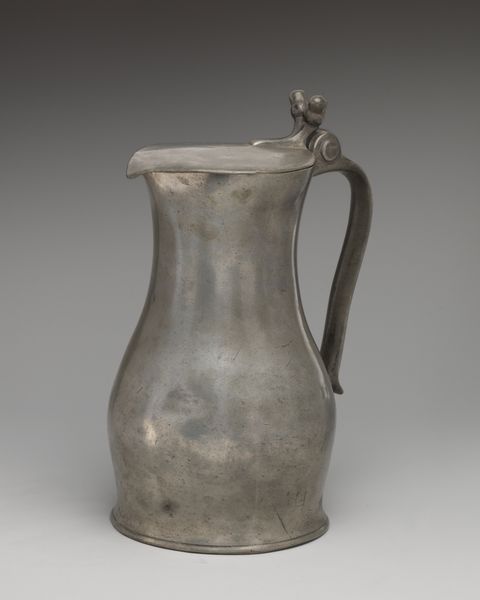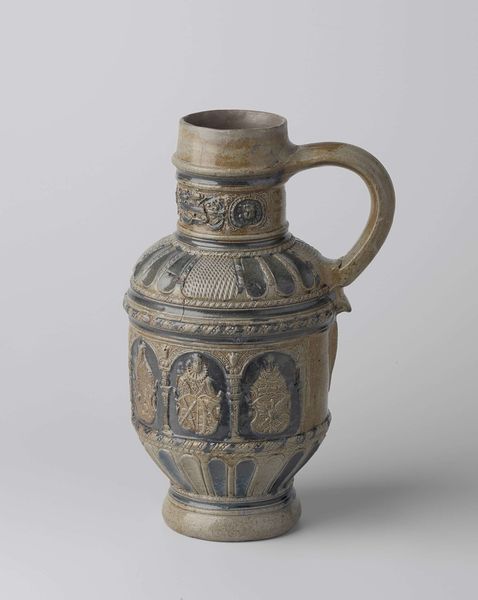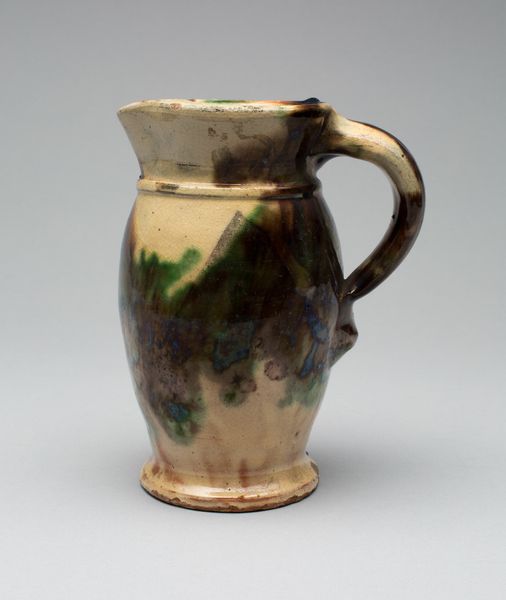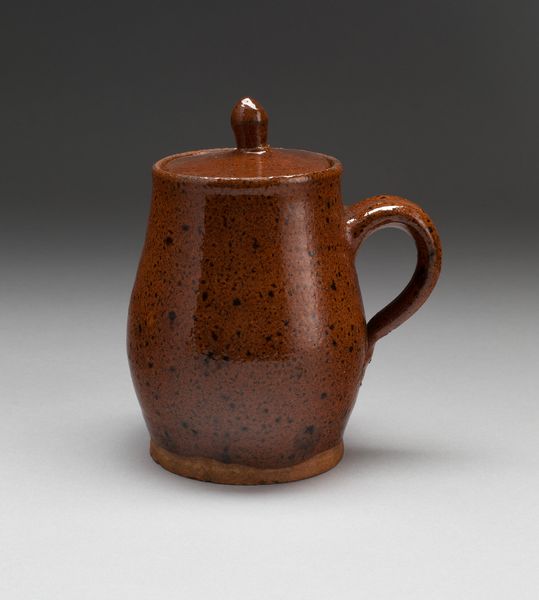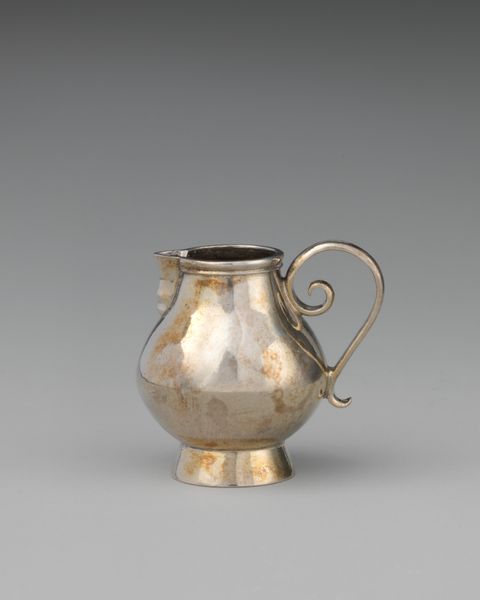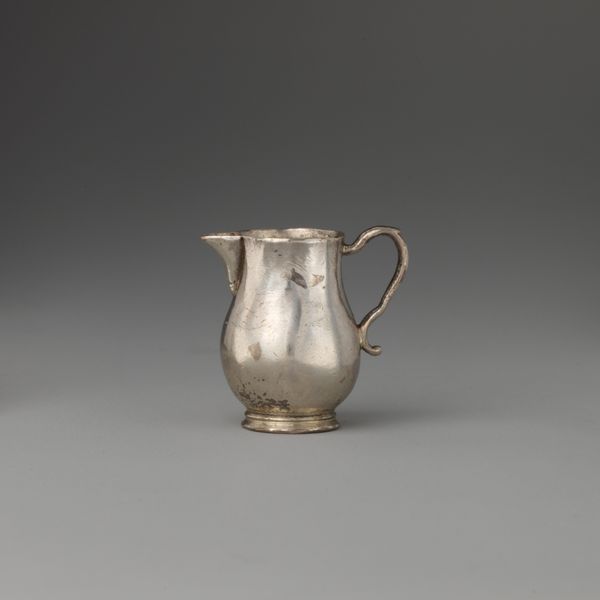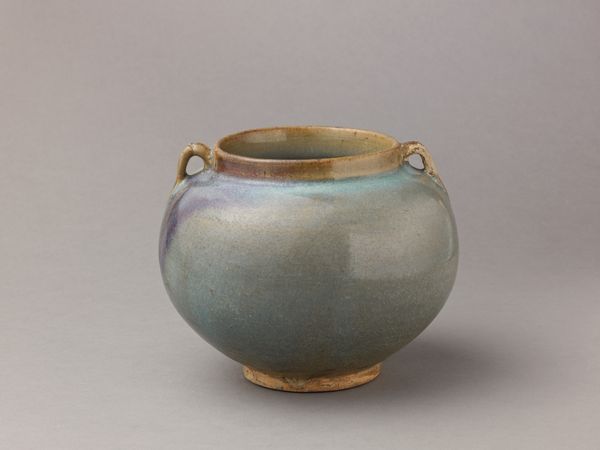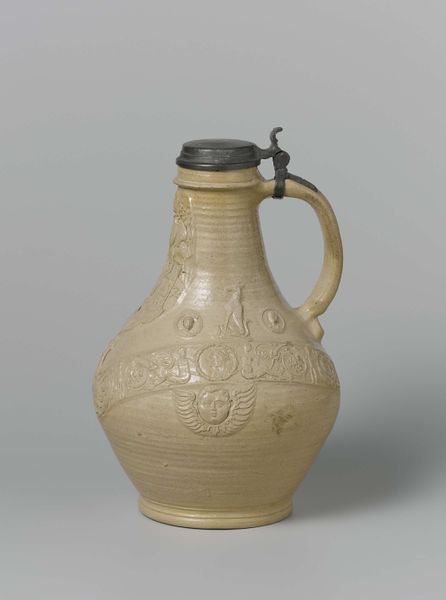
ceramic, earthenware
#
ceramic
#
earthenware
#
stoneware
#
ceramic
Dimensions: height 8.2 cm, width 10 cm, depth 6.9 cm
Copyright: Rijks Museum: Open Domain
Curator: Here at the Rijksmuseum, we’re looking at a stoneware jug by Joseph Mendes da Costa, titled "Bak van steengoed met zoutglazuur" and it dates to 1901. Editor: My first thought is of practical use elevated into art. There’s a beautiful humility to it. The form, though simple, feels so complete and grounded. Curator: Let's dive into that "practical use." The material, salt-glazed stoneware, wasn’t just chosen for aesthetics. The process involves adding salt to the kiln during firing. The sodium vapor reacts with silica in the clay, creating that durable, slightly textured, glassy surface. Mass production in early 20th century used this to churn out cheap ware...what do you see? Editor: I notice that repeated rosette motif encircling the top and the base, suggesting a dance. Rosettes have meant protection, or illumination through centuries. Seeing them rendered in the earthy tones of the stoneware makes them feel deeply connected to the domestic sphere, bringing light and joy into the everyday ritual of pouring, perhaps water or beer or wine. Curator: Right, these motifs may elevate our "everyday ritual" by signaling to folk stories about hearth, home, and protection from the elements through art, in an era defined by increasingly unsafe industry and dense smog! I see Da Costa using repetition to connect to older folk wares, a trend among his contemporaries, while industrialization and social anxieties started creating gaps between "art" and "craft." Editor: And it’s that very connection – this bridge between industry, artistry and simple use - that strikes me most powerfully. A timeless object whispering stories of warmth, sustenance and memory. Curator: Well, looking at this piece from a maker's viewpoint helps appreciate how Mendes da Costa cleverly worked to bring "low" ceramic craft to a wider audience beyond his usual marble statues displayed in galleries. It becomes about art meeting functionality for a growing number of city inhabitants. Editor: Yes, a truly lovely thought! And now when I look, I don't just see a jug but a carrier of untold, intimate stories. Curator: Likewise, considering how Mendes da Costa worked within craft to signal folk elements is a clever nod to his audiences.
Comments
No comments
Be the first to comment and join the conversation on the ultimate creative platform.

